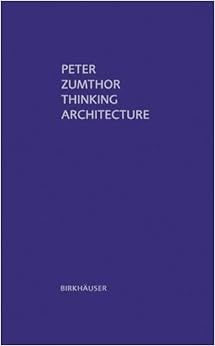Critical Thinking and Writing Architecture
- Neha Mhadolkar, Gargi Somani
- Jun 30
- 2 min read
Studio Co-ordinator: Ruturaj Parikh
Gargi Somani, Neha Mhadolkar
This course was about helping students slow down and really read, not just skimming through words, but understanding what an author is trying to say and finding their own thoughts within it. We used two books for this: Thinking Architecture by Peter Zumthor and A Place in the Shade by Charles Correa. The class was split into two groups, each reading one book. Every student got one chapter to focus on.
In the first two weeks, we read and re-read their chapters. The idea was to spend enough time with the text to understand the main ideas and what the author cared about. After this, we broke the text down into clear points and small notes, pulling out the core ideas and any important references.
Then we moved on to images. Each student had to find ten images that best showed what the chapter was about. For each image, we wrote a short line or two explaining how it connected to the ideas in the text. This step helped us stop relying on the author’s words and start seeing the bigger ideas behind them.
In the final part, we made it even more personal. The vantage point has now moved from the author to the student. The issue remains the same, but the exercise now intends to articulate the central idea, elaborate, synthesise, exemplify, and summarise. For each picture, we wrote a small piece of about 200–250 words, using their own life or surroundings to talk about the idea.
By the end, we weren’t just repeating what Zumthor or Correa wrote, we were writing our own stories and thoughts. We learned that reading is not just about understanding someone else’s words but about finding new ideas and connections in our way. In the end, this course was about reading between the lines and seeing how any text can open up fresh ways to think about the world around us.
An excerpt from Kris Almeida’s essay:
Some learning happens quietly, without direct teaching. Ekalavya never met his guru, but still became a great archer. He learned by repeating, observing, and believing that someone was guiding him through primary imagination, and then execution. He didn’t question anything. He just kept practicing. In design too, many decisions are not based on logic. One simply declares something is off or best. The sense of just ‘knowing’ comes slowly, after repetitive practices of sketching, seeing other people’s work, failing, and trying again. Your hand starts knowing what to do, even before your head explains why and how to verbally phrase it. In architecture, learning doesn’t always happen through theory. It happens by doing, that is, a practice like drawing again and again until something clicks.
An excerpt from Gargi Somani’s essay:
Over the last four years, I have realised that learning architecture is not only about drawings and models but about staying open to questions that emerge from everyday experiences, sites, and people. Design studios and mentors have taught me to look closely, but real learning often happens outside the studio, too. Through these experiences and encounters in everyday life, it has taught me to retrospect deeper and dwell into these questions and find answers.









Comments